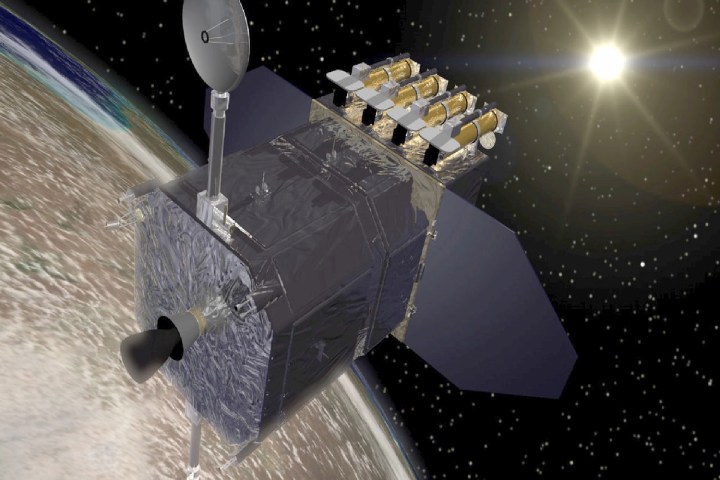
How do you fix a satellite’s instrument that’s floating 22,000 miles above the Earth’s surface?
That’s a question NASA Frontier Development Lab (FDL) was asked to address when one of its space weather observing satellites ran into problems. This satellite was the Solar Dynamics Observatory (SDO), which is used to study the Sun and its impact on space weather. This is important for all sorts of reasons — since solar storms can knock out GPS satellites, shut down electrical grids, and scramble communications.
Unfortunately, one of the SDO’s three instruments, responsible for measuring ultraviolet light, stopped working due to a fault. This data is essential to satellite operators. Not properly compensating for atmospheric changes due to ultraviolet light may cause satellites to fall out of orbit and burn up or crash.
A repair mission was not in the cards. Instead, NASA FDL posed the problem to its early career professionals in Space Weather and A.I. to see if they could solve the problem from Earth using cutting-edge artificial intelligence. The request? Could they figure out how to use data from the SDO’s remaining two instruments — its atmospheric imaging assembly and helioseismic and magnetic imager — to work out the missing extreme ultraviolet radiation sensor measurements. The answer from a team made up of researchers from IBM, the SETI Institute, Nimbix, Lockheed Martin, and academia: Apparently, yes.
“One of the biggest challenges was to find the optimal A.I. framework and model for the problem at hand — namely, virtually ‘resurrecting’ the failed SDO instrument so that we could once again get the data that instrument would have produced if it was still working,” Graham Mackintosh, A.I. advisor to SETI Institute and NASA, told Digital Trends. “The team automated the task of modifying, testing, and recording the results of almost 1,000 different versions of the deep learning model before settling on the final approach they determined to be optimal.”
In the end, a joint venture on the part of the researchers was able to create a deep learning neural network which could predict the required data with greater than 97 percent accuracy.
“IBM provided two IBM POWER9 servers equipped with Nvidia GPUs to accelerate the neural net training,” Mackintosh continued. “The researchers on the team were able to use these servers remotely on the cloud, thanks to hosting serves by IBM partner Nimbix. These dedicated servers provided a highly productive platform for the team, and allowed the researchers to use pre-installed IBM Watson software, [as well as] install additional open source A.I. tools they were familiar with. In addition, we were able to work with Nimbix to adjust the hardware configuration on the fly — including adding solid state hard capacity without losing any work. Quite a feat!”
Editors' Recommendations
- Read the eerily beautiful ‘synthetic scripture’ of an A.I. that thinks it’s God
- NASA wants to use a tiny satellite to help investigate exoplanet atmospheres
- Why teaching robots to play hide-and-seek could be the key to next-gen A.I.
- The BigSleep A.I. is like Google Image Search for pictures that don’t exist yet
- Clever new A.I. system promises to train your dog while you’re away from home


